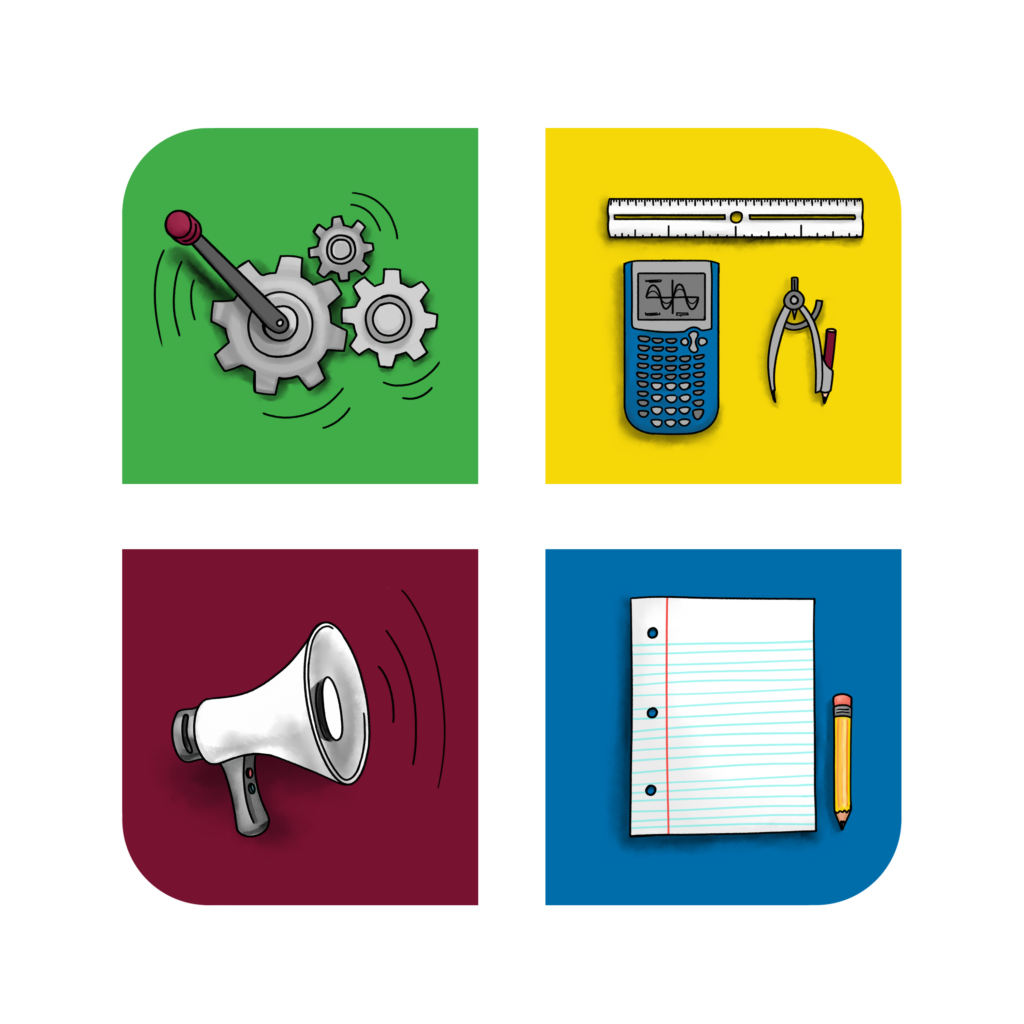Chris Mikles, Director of Teacher Education, chrismikles@cpm.org
Study Team and Teaching Strategies and helping teams to work effectively are two things I am passionate about. I have been travelling throughout the country doing workshops about this, titled Creating Collaborative Classroom. If you know of a non-CPM school or district that might be interested in learning about STTS, have them email me to get more information.
Throughout the years we have developed a list of 30 STTS that we have included in the books. I get a lot of suggestions for new STTS from time to time, but I worry the existing list is already too long. However, many teachers are ready for some new strategies. So, I would like to start sharing them in the newsletter and start a document that will be available for teachers to view. Below are several new strategies that will start the new list Also, in our current list of 30 STTS, are there any that are really not being used? Could we shorten our list of 30 to only 24? Which might you eliminate? Send an email to Chris with your choices to be eliminated as well as any new STTS you might have.
Modified version of a Carousel – Dean Walker
I visited a CPM classroom this past fall and was pleasantly surprised to see a new CPM precalculus teacher using a STTS that was not even suggested for the lesson. He had been reading about different STTS and decided to try one. The lesson had a nice meaty problem that he replicated and placed a copy of on each table with a large sheet of chart paper for showing work. The students had a few minutes to read the problem and get started; he used a timer to monitor the time. When the timer rings, students leave their work and move to the next table. At the next table, teams have to read what the previous team has done, make any corrections, figure out their strategy, and then add to the work. When the timer goes off, they move again. Extra time is added with each change to give teams the time to read and check and then add to the work. This continues till the teams are finished or mostly finished. This activity is brought to a close by asking processing questions: How did it feel to continue the work on someone else’s paper? What did you do if they did not solve the problem the way your team had? What did you learn?
I tried this at the National Conference and asked the teachers for feedback:
- During the first round, the teams read and discuss the problem only (do as a Teammates Consult where they read, think, discuss and cannot pick up their pencils till the second round).
- For the second round they may start work and continue as in Dean’s description above.
- Have team members change the writer each time.
- Teacher needs to circulate (as well as keep time) to keep everyone on task.
- Another idea is (as with a Hot Potato) each team has one color of marker for use when they are writing. That way, if there is a question or concern, you know which team to talk to.
- One concern the participates raised is that some teams were a little faster than the team ahead of them and so seemed to be doing the same thing over and over. A possible solution is to have the teams rotate in a different order each time. So if you have eight teams, the first round can have the rotation 1 -> 2 -> 3 -> 4 -> … But on the second rotation 1 -> 3 -> 5 -> 7 and 2 -> 4 -> 6 -> 8. You can even have the teams reverse the rotation and go in the opposite direction.
- Consider having two different problems. Maybe tables 1 – 4 have one problem and teams 5 – 8 have another. Continue with the rotations as stated above. This could be hard if the first rotation takes them to a new problem.
Graffiti (modified Math Chat) – Scott Blatnick
This is a great way to review a concept. Put a problem on the board and allow the students to “graffiti” the board. Here is the protocol:
- Students can only do one step of the problem at a time, and then must return to their desk.
- If there is a mistake, students can correct the mistake, but that counts as one step.
- Students must use a different colored marker for each different step.
- There is no talking.
Talking Pennies – Tracy Frank
In groups of three to five, students are given a question or set of questions to discuss. Each student receives an equal number of pennies. Each time someone participates, they must first put one of their pennies into the middle of the table. A student who has used up his or her pennies must wait for all the other students’ pennies to be in the middle before speaking again.
Mirror-Mirror
- Students solve a problem, or write a Toolkit or Learning Log entry.
- Students get up and compare it with another student.
- The pair holds their papers up to each other to make sure they are the same (hence, mirror-mirror).
- Each student initials or signs the other students paper.
Repeat this if desired.
